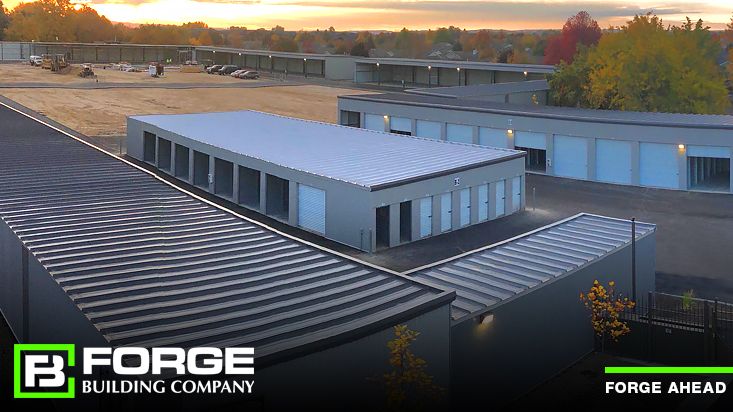
The Self Storage market is exploding and you’re anxious to jump in. You’ve found the ideal location and purchased the land, so now what?
Before you can pull permits or start the design process, it is key to completely understand your target market – who your customer is based on the highest demand units in your geographical areas down to the lowest usage units.
In our August 31 blog titled “Market Analysis and Feasibility Studies – Are They Worth the Investment?” we discuss the best ways to determine your given market, rental rates, demographics, and tenants. Additionally, a full Self Storage Feasibility Study also looks in depth at financial projections, marketing plans, unit mix, and many other factors. This blog is worth the read as the first step towards fully understanding the importance of understanding who your target market is so that you can then determine the right unit mix for your facility. Whether you hire an outside resource to do a professional feasibility study or complete it on your own, at the end of the day, the call on determining the best unit mix is entirely up to the owner.
What's needed in determining the best unit mix for your location? This decision is one of the most important aspects when it comes to developing a self storage facility. Determining the right layout with the right mix of units can increase your facility’s profits.
Once you have the demographic and competitive data, you can more easily calculate the current and future market demand by developing a matrix based on types of units (or X) expected rental rates rolling up to a monthly and yearly proforma to determine projected income for your facility. To do this:
1. Take the population number for your demographic or trade area
2. Multiply it by the forecasted demand number
This equals the gross demand in square feet for your demographic or trade area.
1. Subtract the result from the sum of the total existing amount of square feet of self storage and square feet in development in your demographic area.
This gives you the net demand in square feet in your area.1
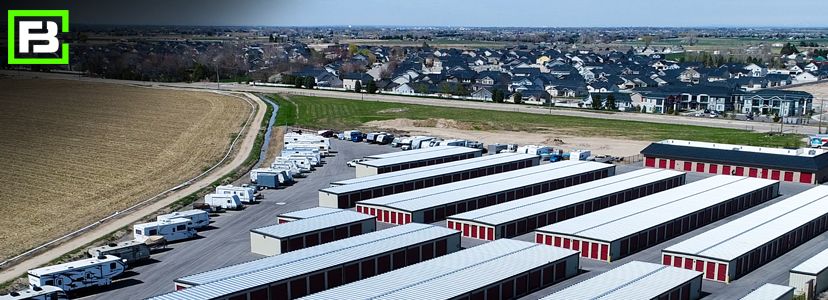
1. Fully Evaluate your Demographics
Your ideal layout and unit mix should cover the needs of potential tenants in your area. If, for example, your area has a higher percentage of homeowners, then you may need to include larger units versus smaller units for renters. If the area your facility is located in has a high percentage of boat and/or RV owners, then you may want to include canopies or storage for those types of vehicles as well.
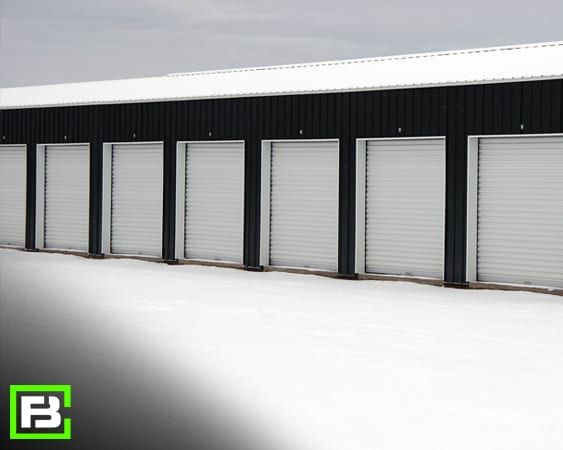 2. Consider the Climate
2. Consider the Climate
In last week’s blog titled, “Doors, Roofing, and Best Climate Control for Your Geographic Location,” we discuss the importance of climate-controlled storage units if your facility is located in a part of the country that reaches temperatures above 90 degrees or in areas that fall below 32 degrees. Places with both extremes will definitely need humidity protection. Fluctuating temperatures can create condensation inside electronics, causing irreparable damage.
Likewise, anything that has liquid in it already can crack due to expansion from freezing. This is especially true of battery cells, including those for cars, mowers, and other small engines, which can crack when frozen. If your facility is located in an area that experiences extreme temperatures or high levels of humidity, your customers may be looking for climate-controlled storage units. Even in areas with moderate climates, humidity-controlled units are often popular with storage unit tenants, as they protect their belongings from the damaging effects of the environment.
3. Consider Residential versus Commercial Units
This ratio will also affect your unit mix. Again, your Market Analysis and Feasibility Study will help you best determine this.
4. Use Your Square Footage Efficiently
When planning your facility, you will definitely want to maximize your facility’s rental areas and minimize common areas. However, it is also best to keep your customer in mind when planning. While narrow hallways can give you more space, they may make it extremely difficult for your tenants to move their belongings.
5. Make Your Layout Convenient
Your facility layout should be designed with customer convenience in mind. This will keep them renting their storage units longer and increase the profitability of the facility. One example is to minimize the number of turns required from an elevator to the storage units. An ideal layout requires only two turns.2
6. Consider Phasing
One other tactic that self storage facility owners should consider is to build their projects in phases to help determine their optimum unit mix. This gives facility owners an opportunity to adjust the unit mix as they expand. Phasing will allow the owner to make more calculated decisions and create a larger asset value over time. It will also allow for any changes in the market with the changing economic environment currently occurring in the U.S.
When you are developing a self storage business plan the two biggest factors will be built on the unit mix and lease-up timeline. For the highest possibility of your facility’s success, it is important to constantly be doing the research and continue working on your proforma at 120, 90, 30 days out – all the way up until building is complete. Again, if you decide to use a phased in approach, you will also be able to adjust the business as market conditions change.
Works Cited
1. Self-Storage Ninjas. (n.d.). Retrieved from selfstorageninjas.com: https://www.selfstorageninjas.com/self-storage-feasibility-blog/2019/2/5/demystifying-the-unit-mix
2. Scheib, K. (2022, March 1). Investment Real Estate, LLC. Retrieved from irellc.com: https://irellc.com/resource/choosing-best-storage-unit-mix/
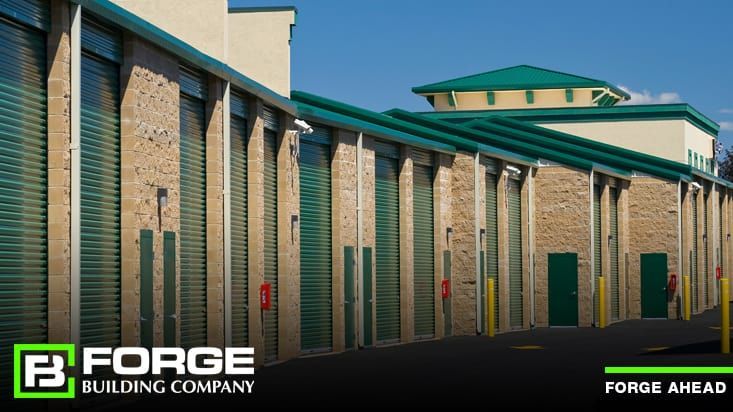
You have your storage facility up and running, or you’re in the planning phase of building your next facility... so what are the key factors you need to think about when it comes to your doors, roof, and climate control?
In our February 25th blog “Ensuring Form, Function and Long Life: How to Properly Care for Your Self Storage Unit Doors and Roof” we discuss how to properly care for your doors and roof. And in our November 21, 2021 blog post titled "Generate More Revenue by Offering Climate Controlled Self Storage” we discuss common uses and benefits along with design considerations when building a temperature or climate controlled self storage facility.
What it boils down to is that these three critical components are critical to keeping your facility and your tenant’s belongings safe, secure, and protected from any sort of criminal activity and/or weather elements. Using the right materials is also super important for curb appeal and energy efficiency.
One of the most distinguishing factors of a self storage facility are its steel roll up doors, so it’s important that they be well-maintained! Not only do they contribute to curb appeal, but they are a large part of the tenant experience providing safety for their belongings and can be a safety hazard if left untended. When building a new facility, metal wall and siding panel systems will provide the most flexibility when it comes to design, and these can be used for new construction or retrofit to existing buildings.
In addition, roll-up doors will also help maximize usable square footage in each storage unit.
Steel roll up doors should be inspected before a tenant moves in, and again after they’ve moved out. Inspection of a roll-up door doesn’t just mean ensuring it looks good, but also means it is functioning properly.
Here’s a closer look at metal panel wall systems.
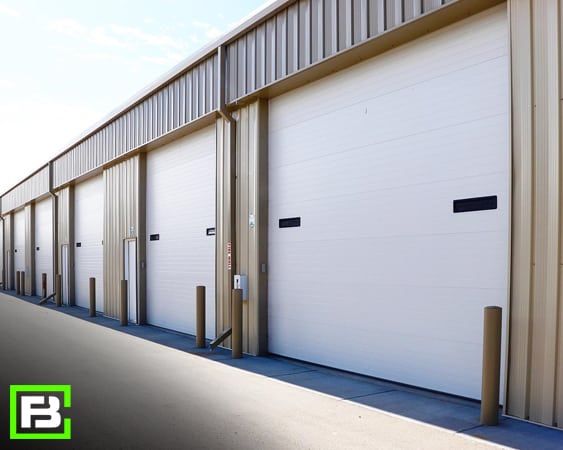
Metal Panel Wall Systems
There are a number of benefits to using metal panel wall systems for a self storage facility. First, they often come in a variety of colors that can coordinate with any buildings' décor to create continuity and increase the facility’s curb appeal. Metal panel wall systems are also durable, environmentally friendly, and cost-efficient.
In addition to the aesthetic appeal and safety ratings of metal wall panels, they are also revered for their sustainability in the building industry. Not only can they help with reducing the consumption of energy within the building, but they can also be recycled. Recyclable metals can then be restructured into other metal wall panels with the same structural integrity.1
The good news is that Forge has one of the largest selections of metal wall and siding panel systems in the self storage industry. The Company’s wall panels include single skin, insulated, exposed fastener, concealed fastener, and interior wall liners, and most can be installed both vertically and horizontally, providing additional flexibility in design. Forge’s metal siding panels can be used for new construction or to retrofit existing buildings.
In addition to providing complete building packages, Forge also offers components to be installed in buildings by our experienced team. The system can include either swing or steel roll up doors as well as man doors. Additional steel angle, wire mesh, and burglar bars are available as needed. Hallway walls can be purchased as flush or ribbed PBU panel.
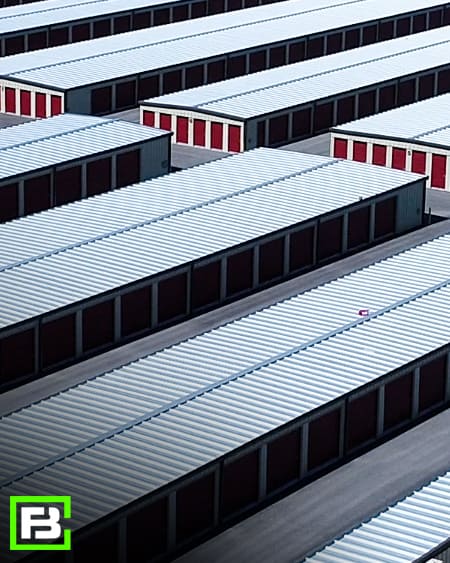 When looking at key factors for your existing or new facility, one of the biggest considerations is the roof. Protecting your tenant’s belongings is the main focus of a self storage facility. It doesn’t matter if you have a traditional, single-story facility or a multistory facility – your roof matters. Even a small leak can damage your customer’s property.
When looking at key factors for your existing or new facility, one of the biggest considerations is the roof. Protecting your tenant’s belongings is the main focus of a self storage facility. It doesn’t matter if you have a traditional, single-story facility or a multistory facility – your roof matters. Even a small leak can damage your customer’s property.
As self storage buildings age, roof maintenance and repair become more important and time-consuming. An inspection and maintenance program are an important part of sustaining roof life as well as keeping costly repairs and property claims in check. That’s one of the reasons the team at Forge Building Company recommends commercial metal roofs.
With proper inspection and maintenance, a metal roof can last for decades. The goals of a good inspection and maintenance program are to proactively locate and repair possible leaks while extending the life of the metal panels. This inspection and care will help you keep your roof in the best possible condition. The most effective examination for metal-roof systems includes four specific areas: the perimeter, the ridge, fasteners, and debris.
To learn more, see Metal Building Re-Roofing with Standing Seam Metal Roof Panels.
A metal roof will also act as a fire barrier if some part of the building or the surrounding area were to catch fire. Another benefit is that metal roofs can prevent water build-up from creating mold or decay problems that could destroy the building's structural integrity.
Very few places in the country are fortunate enough to avoid the frigid temperatures of winter every year or the extreme heat of summer. These extreme temperatures are not good for storing items unless you put them into a self storage unit that is climate controlled.
If your self storage facility is located in a part of the country that reaches temperatures above 90 degrees, air conditioning is definitely needed to protect customer’s property from problems like rotting or yellowing. Self storage units located in areas that fall below 32 degrees may need to be heated to prevent cracking or warping.2 And places with both extremes will need humidity protection. Fluctuating temperatures can create condensation inside electronics, causing irreparable damage. Likewise, anything that has liquid in it already can crack due to expansion from freezing. This is especially true of battery cells, including those for cars, mowers, and other small engines, which can crack when frozen.
A temperature-controlled self-storage facility is one that’s both heated and cooled. Its purpose is to provide an environment suitable for preserving stored goods, so the temperature range will typically be higher or lower than what you would find in a home or office—usually heated to 55 degrees and cooled to 85.
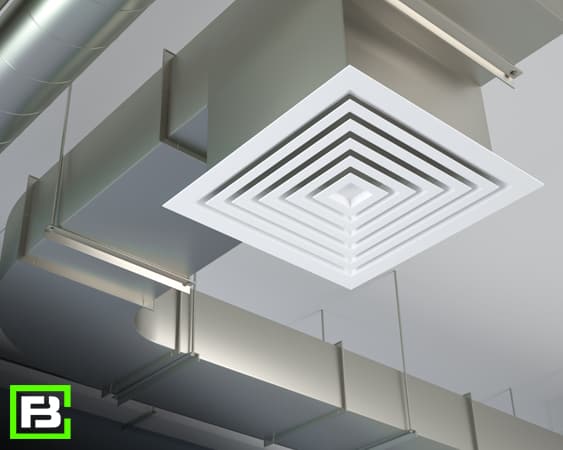
Today more self storage sites are starting to include climate control in the mix, and in some markets, many storage sites consist entirely of climate-controlled units. In most markets, climate or temperature-controlled units can be an excellent addition to your storage development. Through the use of insulation and central heating and air, a climate-controlled unit will protect your customer’s belongings in the harshest of winters and/or the hottest summers.
And with today’s more efficient building insulation, it’s more important than ever to work with a reputable storage unit contractor such as Forge Building Company to install a system that not only heats and cools, but also monitors and removes humidity.
Works Cited
1 Metal Sales. (n.d.). Retrieved from MetalSales.us.com: https://www.metalsales.us.com/metal-wall-panels/
2 StorageFront. (n.d.). Retrieved from storagefront.com: https://www.storagefront.com/storagetips/company-tips/climate-control/
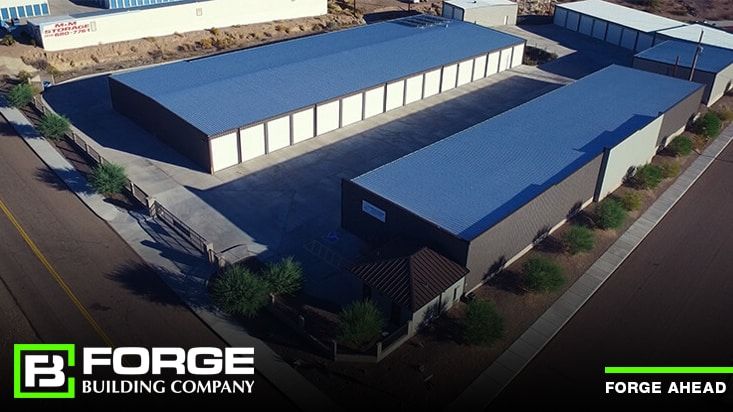
Boise, Idaho. – September 1, 2022 – Forge Building Company, a leading national building company with a strong focus on self-storage and innovative building solutions, today announced the groundbreaking on the second phase of its LuxeLocker Boat & RV Storage project, the premium luxury RV and boat storage facility in Boise. What is unique about this project is that customers own the individual storage units instead of renting them.
This project has included 107,023 square feet of facility. In the newest second phase, LuxeLocker is adding 63 new units. The facility is located at 7373 S Federal Way in Boise and will serve the areas dynamic and growing population and business community.
“We are proud that Forge Building Company was selected for this project because of the need for a premium facility that offers numerous amenities not typically found on storage properties,” said Hamish Bell, CEO of Forge. “We are confident that we can provide the specialized expertise needed for this kind of project given our experience with building many quality commercial RV and boat storage facilities.”
LuxeLocker is a premium property, offering larger units with widths of over 14’ wide and depths of 40’-60’. The average unit is approximately 700 square feet. Accompanying the generous unit sizes are expansive driveways wider than 60 feet. The facility is designed to accommodate large recreational vehicles for easy maneuvering. They also offer amenities for RV owners that most others don’t, including RV cleanout stations, RV wash bays, and bright night lighting.
The property is leading the industry by offering fully integrated of ‘smart’ technology. Customers can acquire space at a LuxeLocker and manage their property remotely from the comfort and convenience of their computer or smartphone—at home or on the road.
Forge Building Company and LuxeLocker plan on a high quality and aesthetically pleasing building using the latest in reliable construction techniques and innovations in the steel building industry.
Development that enhances the community makes for great neighbors, boosts property values, and supports smart growth. Forge Building will be constructing a lower height building that only rises to 18 to 22 feet around the perimeter. Noise and light pollution are practically non-existent. LuxeLocker’s premium clientele of owners, along with larger size units and fewer tenants per square foot, along with the recreational vehicle enhanced space reduces traffic in and out of the site for lower impact on the neighborhood.
LuxeLocker offers storage space that customers own instead of rent. The LuxeLocker model offers customers a long-term real estate investment, along with the ultimate in storage space. Purchasing a storage unit provides customers with an active asset with the ability for future capital growth. Space can be subleased to give owners a consistent passive income stream. Mortgage payments offer a tax benefit and are often lower than the rent on comparable units.
For more information, please visit https://luxelocker.com/.
Founded in 2007 and headquartered in Boise, Idaho, Forge Building Company was created after its founders, Hamish and Hayden, spent decades working in the steel-structure industry. Using their expertise in storage and focusing on the three pillars of buildings, designing, and erecting, led the company to a more diverse portfolio and stronger strategic partnerships across the U.S.
Today, the company offers steel buildings for self storage, RV & boat storage, car washes, airplane hangars, large warehouses, fish hatcheries, and craft breweries/restaurants. Other offerings include pre-engineered metal buildings for industrial and commercial applications.
With a strong portfolio of partners and clients, the Forge team has completed over 500+ jobs, built over 50 million square feet and remains privately owned. This solid team with complimentary skills was founded on a rugby field in New Zealand over two decades ago and is now working to be the best in the industry.
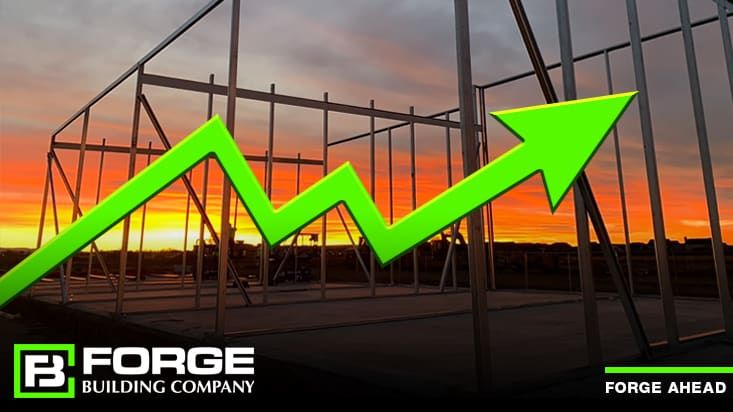
For more than 40 years, the Self Storage market has proven to be one of the sectors with the most rapid growth in the U.S commercial real estate industry. The unprecedented growth of the industry has been attributed to self-storage consumers including renters, homeowners, students, businesses, and transitional populations who are constantly demanding rental storage.1
The COVID-19 pandemic also led multiple business owners to opt for self-storage. Having to work from home for most parts of 2020 drove up the demand for self storage to cut out on rents on spaces. And to confirm this, the July 2022 National Self Storage Report by Yardi Matrix, indicated that demand continues to come from all directions, including the growth in home offices as most companies employ some type of hybrid strategy for knowledge workers, consumer spending on items such as clothing and furniture, and to a lesser degree businesses using storage for distribution purposes.
Solid occupancy enables property managers to push in-place rents, calculating that vacant units can be filled at higher rates. Concerns center around the slowing economy and rising interest rates that have produced a sudden chill on home sales, which produces an even greater demand for self storage.
In addition, there has been a trend of retailers using self storage as a warehouse and a high end bus company renting two buildings to store their buses-non conventional uses.
The global self storage market was valued at USD 48.02 billion in 2020 and is expected to reach a value of USD 64.71 billion by 2026, registering a CAGR of 5.45% over the forecast period, 2021-2026. The growth in this industry is expected to be positive during the forecast period, owing to the trends of increased urbanization and improved economic outlook across the regions.2
So, how do you know if a property is the right one to invest in for a self storage development?
 Market Analysis
Market AnalysisThe first step is to conduct a market analysis. A market analysis looks to see if there is demand in a particular area for self storage, how much of a demand there is, what specifically is there a demand for, and what the current rates are going for. This part of the process is NOT looking at whether the investment will be profitable, but more about what is current state of the market. Conducting a market analysis gives good foundational information that is included in a business plan. It also gives you information on who your customer is and what type of storage they want.
This critical first step can reduce risk, identify emerging trends, and help project revenue. You can use a market analysis at several stages of your business, and it can even be beneficial to conduct one every year to keep up to date with any major changes in the market.
One of the first things you will need to analyze is who your targeted customers will be. A target audience is a specific group of people who want and need what you offer. With self storage, your target market will likely be defined by demographics. Is your facility located in a college town where your most likely customers will be young college students looking to store items short-term for the summer? Is it near a military base where active duty military need to store items during deployment. Or is your target audience suburban homeowners looking for climate-controlled storage for their cars or other household items?
Understanding who you are marketing to helps you choose the delivery, location, and tone of your marketing programs. If you’re targeting recently divorced couples in your area or college students, you may want to emphasize competitive rates and easy renting processes. If you’re targeting businesses in need of files storage, you may want to focus on climate control and security at your facility.
Part of any self-storage market analysis involves deciding on your trade area radius, or how much of the area surrounding your business likely contains your target customers. You can look at current leads and tenants to see how close they live to their storage units. You can also use a general rule of thumb. In cities, self-storage customers may live less than one mile from their units (up to three miles). In rural spaces, your trade area radius may be up to 10 miles.3
Once you have a trade area radius, consider the demand for self storage units. You will want to determine demand by evaluating how many units are vacant and how many renters there are in your area. It can be challenging to determine vacancy rates of competitors, so you may need to evaluate the local population size and income levels as well to determine overall possible demand.
On a per-person basis, if the supply is less than the demand, the market is deemed to be under-supplied. If the supply is greater than the demand, the market is deemed to be over-supplied. As a test of reasonableness, a comparison of the conclusion to the average occupancy in the trade area can be made.4
Generally speaking, over-supplied markets have occupancy rates less than 80 percent and under-supplied markets have rates greater than 90 percent. A market with an average occupancy rate between 80 and 90 percent is deemed to be near equilibrium.
Understanding the supply and demand of the trade area is a key component to analyzing and forecasting rental rates
 Who Is Your Ideal Tenant?
Who Is Your Ideal Tenant?Once you have a general sense of the demand, supply, and trade area radius, you might want to consider tenants who may be under-served in your area. People who are moving are not the only ones who need storage units. Other possible leads include:
Once the market analysis is completed, the next and often simultaneous step is to do a feasibility study. A feasibility study can help determine the viability of a project or business venture by identifying the factors that can lead to its success. The study also shows the potential return on investment and any risks to the success of the venture.
A Market Feasibility Study determines the depth and condition of a particular market and its ability to support a particular development. The main objective of a market feasibility study is to understand the market to determine if enough demand exists to make the venture successful.
Conducting a feasibility study is always beneficial to the project as it gives you and other stakeholders a clear picture of the proposed project. It can also reveal many opportunities or pitfalls that may not have been apparent earlier. A feasibility study can help a self storage developer or owner understand the truth about a potential site, investment, and market. With this information in hand, you’ll be ready to plan and develop your project, mitigate known risks, or move on to the next opportunity.
A full Self Storage Feasibility Study also looks in depth at financial projections, marketing plans, unit mix, and many other factors.
The most important part of a feasibility study is the economics. Economics is the reason most projects are undertaken. This study should help you decide whether your self storage facility will produce enough revenue to generate a profit after taking care of debt and operating expenses.
Overall, this study will enable you to figure out who the customers within a one- to five-mile radius of the facility will be. Typically, a market for a self-storage facility encompasses a three- to five-mile radius, so your demand analysis should focus on this area.
Elements of a self storage feasibility study normally include business and demographic information such as:5
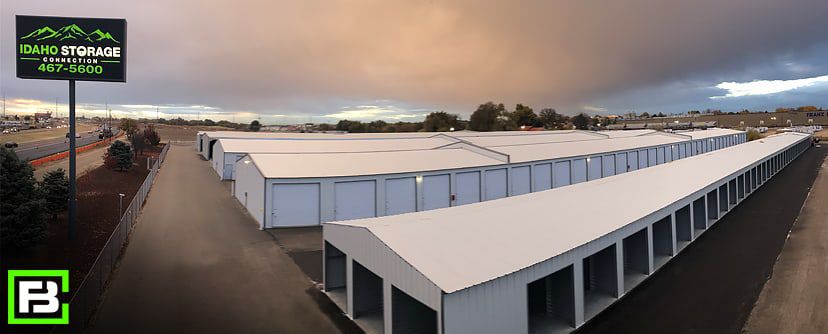
So, is spending the time and money to do a market analysis and feasibility study worth the investment? In our opinion, absolutely. A self storage analysis will help any owner or investor know what to expect in the future from existing or new projects. A self storage feasibility report is an important document that can help the stakeholders meet benchmarks and milestones as the project progresses.
A self storage market report can help an investor understand the local market and make an informed decision about buying or building. While a well-made self storage feasibility study will lay out the roadblocks to success and the likely paths to success, so investors can have a full picture of the range of outcomes.
Given this information, these two things are a definite necessity when determining whether or not to invest in the self storage industry, even if it means using a third party professional. A good Self Storage Advisor is totally worth the investment if they help you identify the best deals and steer you away from the ones to avoid.
Works Cited
1. InvestmentBank.com. (n.d.). Retrieved from Investment Bank: https://investmentbank.com/self-storage-real-estate-market/#:~:text=A%20sub-sector%20of%20the%20commercial%20real%20estate%20market%2C,growth%20in%20the%20U.S%20commercial%20real%20estate%20industry.
2. MordorIntelligence.com. (n.d.). Retrieved from Mordor Intellligence: https://www.mordorintelligence.com/industry-reports/self-storage-market
3. Scheib, K. (2021, 8 23). Investment Real Estate, LLC. Retrieved from irellc.com: https://irellc.com/resource/choosing-self-storage-target-market/
4. Spencer, K. (2019, May 2). Radius Plus. Retrieved from Radiusplus.com: https://www.radiusplus.com/post/how-to-conduct-a-self-storage-market-analysis/
5. Egan, J. (2021, August 23). Storable. Retrieved from Storable.com: https://www.storable.com/resources/learn/self-storage-feasibility-study/
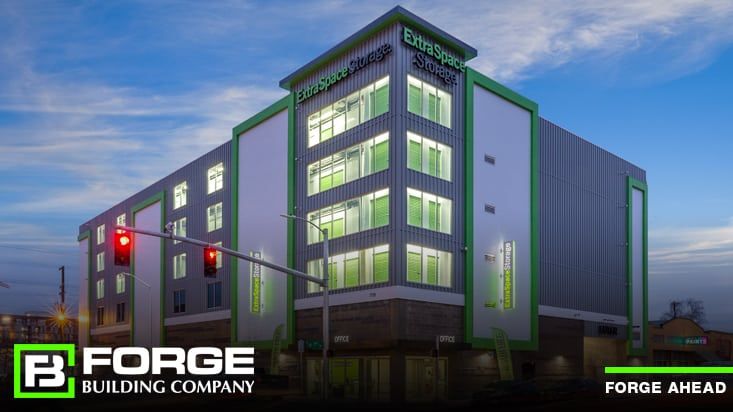
The self storage industry in the U.S. has experienced tremendous growth in the last several years. The current total square footage of self storage facilities in the U.S. is estimated at 2.35 billion square feet with the average facility size approaching 50,000 square feet. Due to their large size, unique space configuration, and recent technology changes, self storage facilities now have the opportunity to generate substantial Section 179D Energy Policy Act (EPAct) tax savings.1
The EPAct (Energy Policy Act) is a federal program allowing for a one-time tax deduction of up to $1.80/sq. foot. Buildings placed in service starting January 1, 2006 are eligible. New self storage construction projects are some of the best candidates for EPAct, usually qualifying for the full $1.80/sq. foot incentive.2
To qualify, you must incorporate energy-efficient construction or improvements that reduce the energy use of a building, specifically the lighting, building envelope, and mechanical systems.
You can take 179D deductions for new construction and retrofits, but you must be able to reduce total annual energy and power costs by 50 percent or more in comparison to the minimum requirements of ASHRAE Standard 90.1. If the 50% target savings is not met, the provision allows a partial deduction of $0.60 per square foot for each of the following components:
The following table illustrates the potential EPAct tax savings available to the self storage industry at and for an average size of 50,000 square feet
| Total Square Footage | Minimum Lighting Deduction | Maximum Lighting Deduction | HVAC Maximum Deduction | Building Envelope Maximum Deduction | Total Maximum Deduction |
|---|---|---|---|---|---|
| 50,000 sq.ft. | $15,000 | $30,000 | $30,000 | $30,000 | $90,000 |
| 2,350,000 sq.ft. | $705,000 | $1,410,000 | $1,410,000 | $1,410,000 | $4,230,000 |
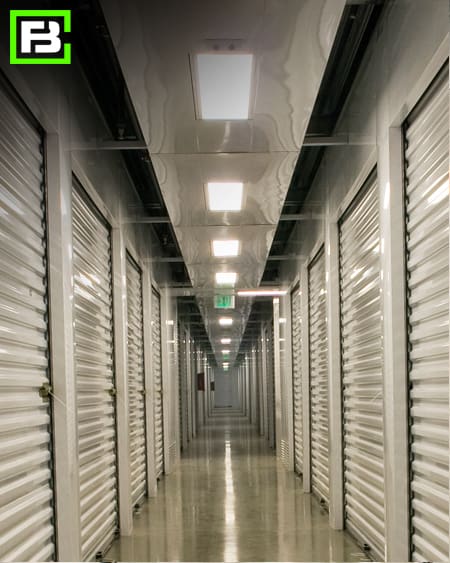 Lighting
LightingIn the area of lighting, all self storage facilities upgrading to the highly energy efficient low wattage compact fluorescent lighting or LED (Light Emitting Diode) lighting would be eligible for a tax credit. It is also important for self storage facilities to use occupancy sensors or lighting control so that lights can be completely shut off for extended periods of time.
There is an increasing demand for climate controlled storage facilities since customers prefer facilities where it is more likely that their property and possessions will remain in good condition. Having a climate control option is a particularly important customer attraction element since a mature self storage market has become more competitive. To maintain stored property properly, it is necessary to control temperature, humidity, and dust. Storage facilities are often ideal candidates for energy efficient energy recovery ventilation equipment (commonly called ERV), that optimizes the use of outside air. HVAC system designers who are familiar with storage centers can utilize high efficiency equipment and create a design configuration that optimizes the building spaces. HVAC design configurations that use less HVAC equipment to cover more rooms are much more likely to qualify for the EPAct HVAC tax deduction.
Self storage facilities in the northern U.S. states often use low-cost, energy-efficient natural gas heaters to meet their climate needs. Large tax deductions are often available for these heaters, provided that the self storage facility also upgrades to energy efficient lighting either before or currently with the heater purchase.
When self storage facilities are converted from an existing manufacturing warehouse or other facility, it is generally necessary to open the building envelope to insert access doors, overhead doors, and make other necessary self storage facility building envelope changes.
Since the building envelope doesn’t physically utilize energy, the ability to achieve a building envelope tax deduction is dependent on previous or concurrent investments in energy efficient lighting and HVAC systems. Here is an example:
A 200,000 square foot self storage facility invests $160,000 in energy efficient lighting and heating resulting in a 50% energy cost reduction. Although the building qualifies for a $360,000 EPAct tax deduction (200,000 sq.ft.* $1.80 per square foot), the initial EPAct tax deduction is limited to the $160,000 project cost. However, the remaining 200,000 of potentially available EPAct tax deduction can be used for building envelope improvements, such as new roof or insulation.
When it comes to accounting and taxes, self storage owners and investors should keep a few planning strategies and reporting considerations in mind to make the U.S. tax law work for them.
The key to maximizing self storage center EPAct tax deductions is to simultaneously install very energy efficient lighting with the other energy efficiency measures, particularly HVAC. The lighting upgrade is normally required since lighting is often the largest energy user in storage facilities, and the EPAct modeling tax system is based on total building energy cost reduction.
For example, installing energy efficient HVAC, such as dehumidification systems or natural gas heaters alone, may not enable a self storage facility to qualify for the HVAC EPAct tax deduction. However, installing energy efficient lighting with sensors, along with the upgrade to highly energy efficient HVAC, makes it much more likely that the HVAC will qualify for EPAct tax deduction.
Another tax consideration is depreciation. This refers to the amount an asset decreases in value over time. This reduction is due to wear and tear from typical use. In an accounting context, depreciation is estimated by considering the generally accepted useful life of an asset.
Here are some examples of specific items and their typical time for depreciation:
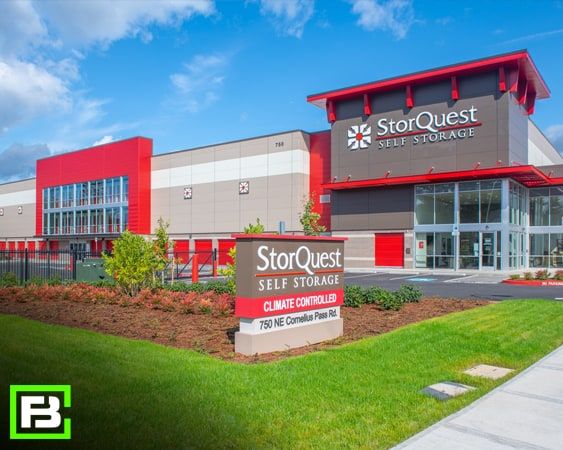 Residential building: 27.5 years
Residential building: 27.5 yearsAssets that depreciate over five to 15 years are generally eligible for something called “bonus depreciation,” which means you don’t have to write them off over their useful life. Thanks to the Tax Cuts and Jobs Act of 2017, you can take 100% bonus depreciation in the year you acquire the assets.4
Self storage operators can also benefit significantly from using cost segregation because of the unique types of construction and exterior improvements found on a storage site.
Cost segregation (also known as cost seg) is a federal tax methodology that uses modified accelerated cost-recovery systems (MACRS) to accelerate the timetable for property-depreciation deductions. To determine depreciation schedules, a cost seg study identifies and reclassifies personal property assets to shorten depreciation time.5
Under the MACRS methodology, you can identify and reclassify assets in five-, 15- and 39-year class lives, depending on the IRS determination of their actual useful life. Here are some examples:
By commissioning a cost segregation study, you can retain additional cash flow for capital improvements, repairs, or expansion. Self-storage operators can benefit significantly from using it because of the unique types of construction and exterior improvements found on a self storage site. And if your tax bill is lower, you can carry forward any unused depreciation amounts until they’re used up.
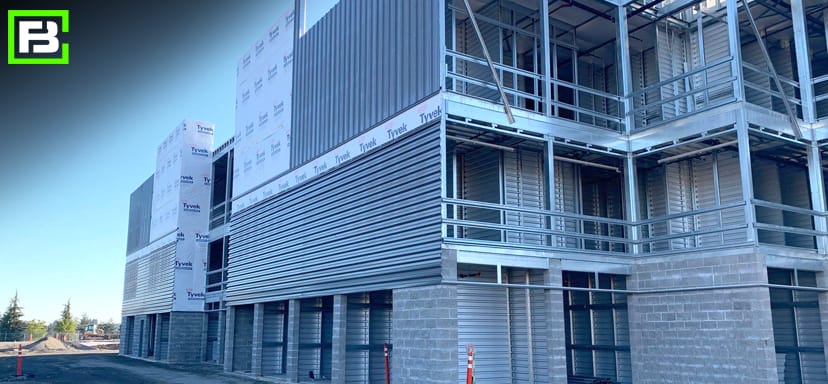
With the U.S. lifestyle changes due to more people working remotely, divorce, death, relocation, downsizing and more, self storage facilities have become a major building category in the U.S. Federal product law changes impacting existing technologies, and new energy-efficient retrofit products coupled with market competition provide a great opportunity to save energy costs and utilize the Section 179D EPAct tax incentives. This coupled with cost seg will have your business booming and more cash in your pocket.
When you are ready to build, convert, or expand your self storage facility, give the team at Forge a call. We will help you capitalize on making your facility energy efficient so that you can qualify for the maximum tax savings.
1 Energy Tax Savers, Inc. (n.d.). Retrieved from energytaxsavers.com: http://www.energytaxsavers.com/articles/Self-Storage-Facilities
2 Eric Ryan Corporation. (n.d.). Retrieved from ericryan.com: https://ericryan.com/dont-miss-the-epact-tax-deduction-opportunity/
3 Cost Segration Authority. (n.d.). Retrieved from costsegauthority.com: https://costsegauthority.com/section-179d/
4 Anderson, M. (2021, June 23). Inside Self-Storage. Retrieved from insideselfstorage.com: https://www.insideselfstorage.com/tax-issues/whats-your-plan-tax-considerations-todays-self-storage-operators
5 Engineered Tax Services. (2021, August 10). Retrieved from engineeredtaxservices.com: https://engineeredtaxservices.com/mobilize-upcoming-tax-changes-to-boost-your-cash-flow-use-cost-segregation-179d-tax-incentives-options-to-defer-taxes/
Note: Forge Building Company does not provide tax, legal or accounting advice. This material has been prepared for informational purposes only and is not intended to provide, and should not be relied on for, tax, legal or accounting advice. You should consult your own tax, legal and accounting advisors before engaging in any transaction.
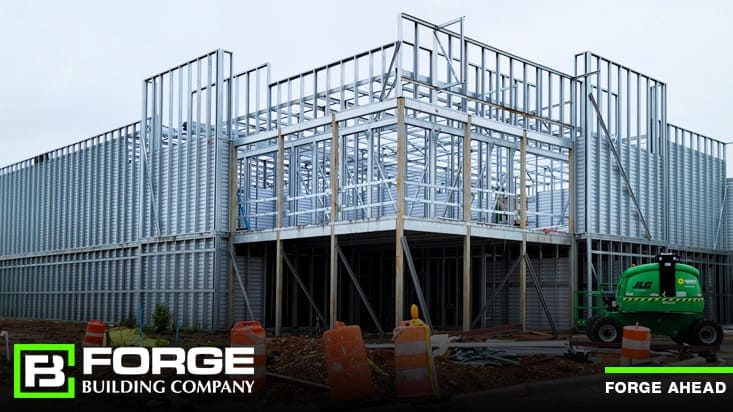
From Alaska to Florida, more than 50,000 self-storage facilities are scattered around the country. That’s about the same number of McDonald’s, Starbucks and Subway locations across the U.S. combined. These facilities are the foundation of the U.S. self-storage industry1, which was projected to generate $37 billion in revenue in 2019. The typical profit margin of a self storage business in the U.S. is 11%.2 That’s well above the profit margins for many other types of small businesses. Given those numbers, starting a self storage business, and keeping your self storage development on track is key. There’s a lot to do and many decisions to make.
Given today’s economy, it is key to act in a timely fashion. Developers and self storage business owners sometimes get stuck in the decision-making process, unable to move forward. No doubt, pursuing a self storage project can be overwhelming since there’s a lot to do and many choices to be made.
By being disciplined and taking one step at a time, you can make smart decisions. Here’s a ten-step plan to keep things moving forward in the right direction.
Before scouting locations for a self storage facility — no matter whether you’re looking at buying an existing facility or building a new one — you’ll need to look at the costs involved. The numbers will vary widely based on factors such as location, acquisition costs, land costs and construction costs. Things you will need to consider include:
Look at the cost of operation. A report released in early 2018 by commercial real estate company CBRE shows real estate taxes accounted for 28 percent of all self storage operating expenses, with on-site and off-site management costs eating up another 38 percent of operating expenses.
Develop a business plan. This can help propel the business toward success, letting you realize your goals and manage issues that might arise. In addition, most lenders will want to see a business plan before extending a loan.
Determine your scale of investment. You might be able to put up a single-story, 40,000-square-foot self storage development in a small town for $1 million or less, whereas a two-story, 80,000-square-foot facility in a more urban setting could set you back $6 million.
You can expect to spend anywhere from $25 to $75 per square foot on new construction. However, the location of the facility — including the cost of the land — will dictate the price tag for construction.
If you’re developing a self storage facility, consider:
Join networking groups and your local self storage association to help you learn from their experiences and gain referrals. Get to know professionals in the legal, real estate, financial, construction, and design industries that are experts in the self storage industry.
 Drive around in the areas that interest you. Look for high-density residential areas and known upcoming residential developments (single- or multi-family).
Drive around in the areas that interest you. Look for high-density residential areas and known upcoming residential developments (single- or multi-family).
Contact a commercial broker and/or your municipality. The city may be selling multiple parcels it owns. Based on its size, think critically about what type of facility could be built on the parcel.
Estimate whether it's good for self-storage. Call the municipality to find out how the land is zoned and any relevant regulations regarding industry development. If the property is already zoned for self storage, that removes a huge barrier. But if the property needs to be rezoned, you could spend months or years seeking approval for a zoning change.
Additionally, the issue of entitlement involves obtaining approval from government entities for your development plans. As with rezoning, an entitlement case could elapse valuable time.
Purchase the land with a 120-day due diligence period. The contract should state that your deposit is refundable during this period if you decide to forego the purchase. If you choose to buy the land, your deposit becomes non-refundable at 60 days. Also, give yourself 180 days to close.3
Complete a market feasibility study. This exercise will help you target the demographics of the customer base within a one- to five-mile radius of the facility. A three- to five-mile area is the typical size of a market for a self storage facility.
You’ll want to validate the median income in the market area (self storage renters tend to be in the middle-income and upper-middle-income brackets), along with the median age (self storage tenants are normally in their early 20s to mid-50s).
In addition, you’ll want to review the following aspects of your proposed market area4:
Other components of the feasibility study normally will include an overview of the self storage industry; long-range projections for rental rates, income, expenses, and property value; and details about the storage project’s zoning. This will help you determine whether the investment's land acquisition and building costs are sound.
This is also the time to look for any obstacles, such as easements, building restrictions, zoning and entitlement hurdles, water retention requirements, and wildlife, tree, or waterway conservation restrictions.
The study should also help determine your unit mix, what phases to build, and the amenities you should offer to achieve your desired return. It provides your operational budget, lease-up period, financial projections, and marketing plan and feeds into the basis of your business plan.
Determining how to finance an acquisition or a new development is your next step. Do you need to take out a loan? A number of options are available, such as acquisition loans, construction loans, and SBA loans. Many of these loans cover terms of 10 to 25 years. Work with a lending professional who’s well-versed in the self storage industry to point you in the right direction.
To qualify for a self storage loan, here are four things you’ll likely need:
Make sure you have enough liquid capital not only to buy or build a facility but also to operate the facility.
You may also want to consider strategically partnering with other investors to buy or build a facility. This can be done through:
If going the loan route, contacting multiple self-storage lenders and negotiating the best terms is best.
Be ready to send each lender or investor all the documents they need to make a quick decision. Your packet should include everything from your feasibility study as well as the items mentioned above, along with your business plan, tax returns, and personal financial statement.
If you ultimately choose a Small Business Administration loan, allow 90 days to close. If you’re going with conventional financing, allow 60 days.
At this stage, there are things you must do to prepare for building – obtain various reports and geographical surveys, such as a phase-one environmental site report, a soil-borings report, an engineer’s preliminary report, and an endangered-species report. Developing a self storage facility requires expertise so organizing your design team is crucial. The team at Forge can lead you through this process.5
A development team should include experienced legal, real estate, financial, construction and design professionals. Few people who are new to the self storage industry can solely develop a new facility.
The design process starts with a survey of the land. The architect creates a plot plan indicating the locations of buildings in relation to the land. In this initial design, the architect considers all the information the civil engineer has provided about site restrictions and the availability of utilities.
The next step is to design the floor plans followed by the elevations, or what the building will look like. Cross sections and details are added to indicate floor levels and details of footings, foundation, walls, floors, ceilings, and roof construction.
The structural engineer then assures the materials and how they are assembled are strong enough to withstand their weight, the weight of any use it may be put to, and all internal and external forces—known as vertical loads and lateral stresses—applied to the building.
A load is any force exerted upon a structure such as snow, wind, or earthquakes or the weight of the building itself. Live loads are produced by people, furnishings, equipment, and materials inside the building. Stresses are internal forces of a material constructed to resist external forces.
The civil engineering plan provides information about the excavation and grading needs the subcontractor will require to prepare the soil for foundations, ensure stormwater drains from the site, determine contours and elevations, and provide an earthwork estimate. That data will also help them provide an accurate bid for crew size, equipment, and timeline, and it’s needed by the retaining wall subcontractor and building manufacturer.
Forge Building Company has created its building design that allows for efficient use of materials and allows for crews to build quickly.
 Once the team has been assembled, the general contractor is responsible for making sure that everyone is building the project in accordance with the design. General contractors may provide labor and materials themselves, use subcontractors and vendors, or a combination of the above. Subcontractors provide their own shop drawings and may be in charge of trade-specific permits and inspections.
Once the team has been assembled, the general contractor is responsible for making sure that everyone is building the project in accordance with the design. General contractors may provide labor and materials themselves, use subcontractors and vendors, or a combination of the above. Subcontractors provide their own shop drawings and may be in charge of trade-specific permits and inspections.
The general contractor weaves everyone’s efforts into the completed product. Because of the volatility of material markets, most contractors won’t lock in pricing for materials and there could be price increases when material orders are processed. It is a good idea to ensure you include a Price Increase Contingency amount in your budget.
When you reach this step, the team at Forge is ready to assist. We will ensure your self storage project is built on schedule and on budget and will take pictures along the way.
With a project start date determined, your general contractor will give you expert feedback on construction activity and sequence of work to accomplish your goals best. Along this path, milestones will be identified such as:6
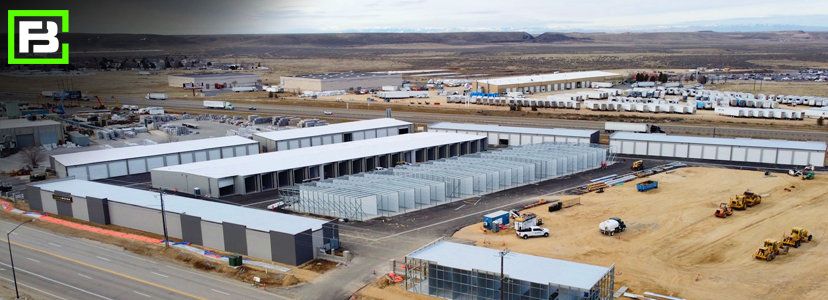
As the schedule is designed, the general contractor typically gets requirements from the major subcontractors to help determine realistic timelines. This information can also help identify long lead times for materials so they can be addressed early in the purchasing process and reviewed for the projected construction cash flow.
This is also a great time to set up your property-management systems and marketing initiatives to be ready to open as soon as you receive your Certificate of Occupancy. For technology considerations, see our blog “Technology – What You Need for Your Self Storage Business.”
Now is the time to leverage your marketing to lease the facility storage units. Your website is one of the biggest assets for a positive customer experience. It should be easy to find and use.
Content for your web presence is the single most important thing for search engine optimization and for prospects and customers to be able to find your business quickly. This includes your blog posts, social media, landing pages, FAQ pages, videos, and everything else related to your business.
Other helpful technology that will improve the customer experience includes any automation you use, security and access tools, digital signage, and property-management software that facilitates online rentals and autopay. Customers expect technology that’s easy to use, available around the clock, nice to look at, and engaging.
For more tips on creating the best customer experience, see our blog “Creating the Best Customer Experience for Your Self Storage Business.”
Once your self storage development is built, open, and renting, the most important aspects of hitting or exceeding your projections and maintaining high performance are answering your phone, monitoring rates regularly, keeping customers happy, and monitoring your marketing and online presence. In addition, it is key to think about giving back to your community, rewarding your employees, and starting to look for land for your next facility!
One of the best ways to create the ultimate customer experience is to walk through the process of renting a unit, visiting the site, and accessing the unit. Was anything surprising? Confusing? Alarming? Go about this drill as if you’re someone who knows nothing about the industry and see how easy it is to navigate the process of looking for, renting, and using self-storage.
The relationship you build with customers through these strategies and how you fulfill their needs is ultimately what will make their experience pleasant and help with retention and referrals in the future.
Works Cited
1 SpareFoot. (2021, January 27). Retrieved from SpareFoot StorageBeat: https://www.sparefoot.com/self-storage/news/1432-self-storage-industry-statistics/
2 Egan, J. (2021, September 13). Storable. Retrieved from Storable: https://www.storable.com/resources/learn/is-a-self-storage-business-profitable/
3 D’Agostino, K. (2021, October 5). InsideSelfStorage.com. Retrieved from Inside Self-Storage: https://www.insideselfstorage.com/development/9-step-plan-keep-your-next-self-storage-development-track
4 Egan, J. (2021, July 26). Storable. Retrieved from Storable: https://www.storable.com/resources/learn/starting-a-self-storage-business/
5 Inside Self Storage. (2008, September 15). Retrieved from InsideSelfStorage.com: https://www.insideselfstorage.com/construction/building-self-storage-creating-harmonious-design-team
6 Rogers, R. (2016, October 6). Inside Self Storage. Retrieved from InsideSelfStorage.com: https://www.insideselfstorage.com/construction/creating-and-managing-self-storage-construction-timeline
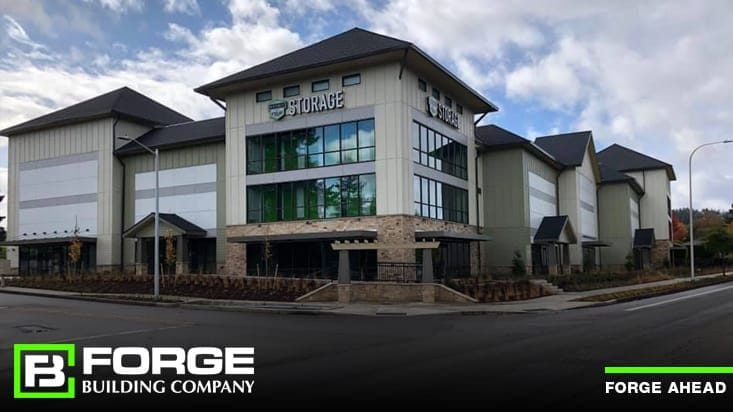
Are you a self storage owner looking at capital improvements to increase income? The team at Forge would love to help with assessing your self storage property. All existing self storage properties will eventually need capital improvements and/or redevelopment. This means making improvements to an existing facility to maximize its physical and economic performance and preserve asset value.1 Buildings suffer from general wear and tear over time, and sometimes you just need to upgrade to keep up with the current trends. For this reason, it’s important to regularly assess your site for potential upgrades, maintenance, and expansion. This blog will discuss what goes into developing a plan, including why these measures are important and their impact on facility value.
To begin, it’s helpful to understand the “why” of investing in capital improvements. The two most common ones are to attract new customers and to improve the current customer experience.2 Other factors to consider include how well your facility competes in its market, current condition of the facility’s units, and opportunities for growth.
The first step in determining whether or not to invest in capital improvements is to develop a plan after assessing your self storage property.
Create a maintenance checklist for your facility broken into daily, weekly, monthly, and yearly tasks. This will help you assess areas of need.
Next, drive around your area and check out all of your competitors within a five mile range. Make a checklist so you can keep track of what you see and learn. Focus on:
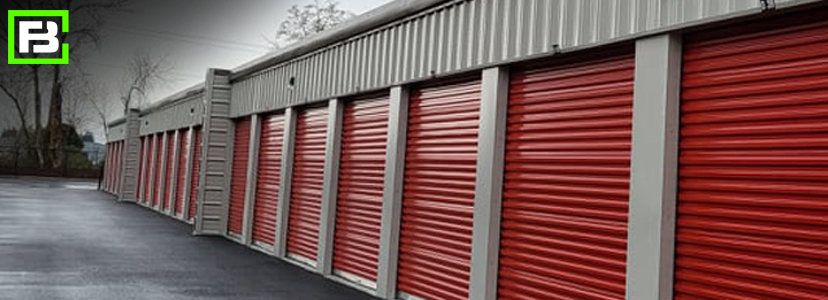
Create a spreadsheet and list each competitor. Then give each property a rating of one to five in each category so you can compare them side by side. Also create a notes section so you can document what products and services each provides – climate-controlled units, drive-up units, boat/RV storage, wine storage, record storage, packing and shipping supplies, truck rentals.
Be as objective as you can. This will help you understand how your facility compares to others and help you determine if you are missing key products and services being offered by other operators in your target area. Once you have completed this assessment, the team at Forge can help you decide and prioritize upgrades to consider as well as help in the complete planning for these upgrades.
When deciding which upgrades to make, the Forge team can help you determine which projects are worthwhile – which ones maximize facility aesthetics, function, and value. The areas Forge looks at includes:
1 Will the project increase sales? Will it attract new customers? Having features that are distinguishable from competitors can improve conversion rates.
2 Will it improve the customer experience? If tenants are happy, they’ll stay longer and leave better reviews; and positive reviews are part of the formula to rank well on search engines and attract more business. Improvements can also demonstrate your company’s value and commitment to current customers.
3 Will it prolong the life of the asset? If the project is preventive or good for the long-term value of the property, then the costs are more easily justifiable. The Forge team will suggest measures to take to help decrease expensive measures later and capital expenses over time.
4 Will capital improvements make the property more attractive to buyers down the road? If your long-term strategy is to sell, capital improvements can raise facility value, commanding a higher sales price. In addition, they can help justify higher rental rates, which improves cash flow and makes the asset more attractive to buyers.
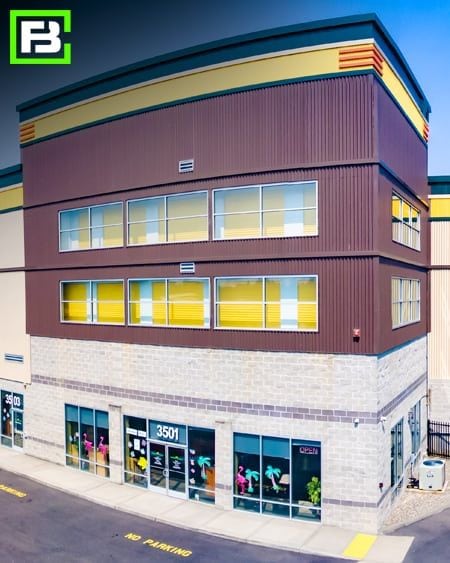 Assessing Your Self Storage Property: Project Focus and Type
Assessing Your Self Storage Property: Project Focus and TypeCapital improvements can be broken into the following four categories.
Aesthetics. This includes things such as painting, façade upgrades, signage, and landscaping. The objective of an aesthetic project is to attract attention with a retail appearance and clear branding elements, so potential customers driving down the street see this is storage, and it’s clean and modern.
Functional/operational upgrades. These include things like door replacements, additional parking, gate upgrades, point-of-sale systems, and office retrofitting. It might include the installation and implementation of technology such as kiosks and smart locks. These improvements enhance the customer experience and make your site more competitive.
Asset preservation. This area includes items that have worn out over the years. It includes items such as roof replacements, parking-lot repaving, sealcoating, mechanical-equipment servicing, and drainage issues. These are areas where Forge can really help. We can provide you with many cost-effective options from which to choose.
Expansion and conversion opportunities. This includes expanding existing buildings, constructing new ones on extra property, teardown and rebuild, or a conversion of portions of your existing facility. Again, the Forge team can step in and guide you through this process from start to finish.
Here are a few final tips to keep in mind when considering capital-improvement projects.
Pay attention to market dynamics. Besides surveying what your competition is or isn’t doing, keep an eye on other factors shaping the self storage industry, particularly in your market, such as future residential and commercial developments in the pipeline. These could drive the need for additional self-storage or lead to necessary projects at your facility.
Build relationships with trustworthy vendors.3 The Forge Building Company team has your back. The company has completed over 500+ jobs and built over 50 million square feet. It is key that anyone you hire is looking after your best interests. Forge has your back! And the company provides the right team for your construction project. This includes a contractor, site planning engineer, building supplier, architect, and project manager. Build a team of people you trust to bring your project to completion. The Forge team knows the self storage industry.
Redevelopment is a great way to add lasting value to your self-storage facility and maximize its physical and economic performance. Creating an honest assessment of your property and understanding how it competes in your market will allow you to create an appropriate scope of work that will make your operation competitive and viable in today’s changing market.
Works Cited
1 Wyckoff, S. (2020, February 28). Inside Self Storage. Retrieved from Insideselfstorage.com
2 Tom Heick, M. S. (2022, January 8). Inside Self Storage. Retrieved from Insideselfstorage.com: https://www.insideselfstorage.com/site-maintenance/capital-improvements-assessing-your-self-storage-property-and-planning-potential
3 Live Oak Bank. (n.d.). Retrieved from liveoakbank.com
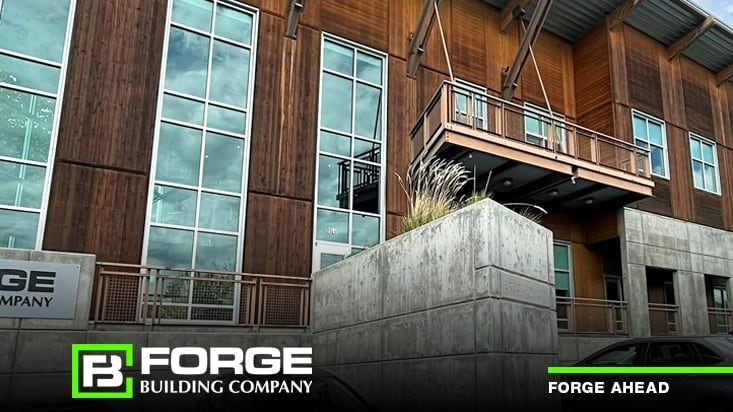
Boise, Idaho. – May 26, 2022 – Forge Building Company, a leading national building company with a strong focus on self-storage and innovative building solutions, today announced the opening of their new headquarters at North Bogus Basin Road. The new facility is 12,152 square feet – up from 6,000 square feet at their old headquarters. The new building is iconic in its design and the community as a standout building in Boise. The atmosphere creates an inspiring workplace and is an excellent fit for the company, aligning with its commitment to innovation and excellence in the steel building industry.
“The strong growth the company has seen over the last year was a catalyst for us expanding out of our previous location,” said Hamish Bell, CEO of Forge Building Company. “We are happy to do our part to help our local economy by hiring top talent. In addition, our summer program will also include interns from Boise State University. On top of our employee growth, we have expanded our business from primarily being only on the West Coast to being a nationwide developer with projects in places like New York, Connecticut, Florida, and Hawaii.”
Building the best team with driven employees is the key to Forge's success. This enables the company to deliver the highest level of customer service to both its customers and vendors. The Company intimately collaborates with the customer as a problem solver, providing the most innovative solutions for their building project. Forge Building listens to customers' needs to provide the most up-to-date, consistent solution using its proprietary methods. The company’s experience, knowledge, and reputation in the industry provide its customers with stability and economic and environmental sustainability.
Founded in 2007 and headquartered in Boise, Idaho, Forge Building Company was created after its founders, Hamish and Hayden, spent decades working in the steel-structure industry. Using their expertise in storage and focusing on the three pillars of buildings—designing, constructing, and erecting—led the company to a more diverse portfolio and stronger strategic partnerships across the U.S.
Today, the company offers steel buildings for self-storage, RV & boat storage, car washes, airplane hangars, large warehouses, fish hatcheries, and craft breweries/restaurants. Other offerings include pre-engineered metal buildings for industrial and commercial applications.
With a strong portfolio of partners and clients, the Forge team has completed over 500+ jobs, built over 50 million square feet and remains privately owned. This solid team with complementary skills was founded on a rugby field in New Zealand over two decades ago and is now working to be the best in the industry.
For more information, please visit www.forgebuildings.com.
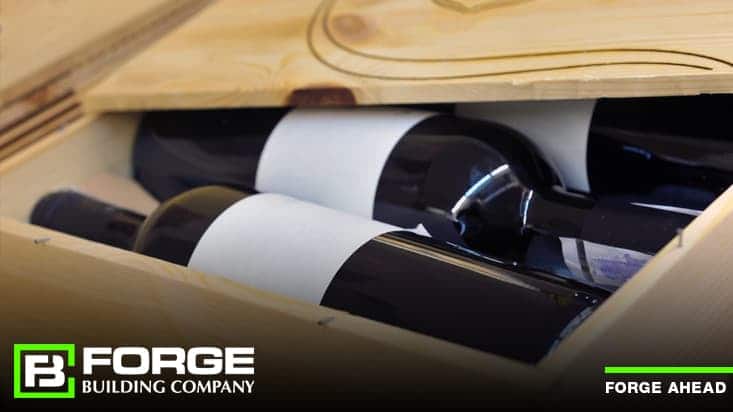
Wine storage is becoming increasingly popular as an addition to self storage facilities. However, the customer base for this niche is very discerning and it may not be ideal for every market. That being said, some self storage owners have found success with this niche by building a dedicated area at their existing facility or adding one during construction of a new property. Following are tips to help in the planning and execution of a design that will help generate income by offering wine storage as a part of your self storage facility.
Self storage development has grown, and is still on pace to grow, significantly more than any other point in the industry’s 40-plus year history (see our blog 2022 Outlook for Self Storage). As more and more competitors are coming into each market around the country, self storage facility owners must find new ways to differentiate themselves in their markets. This can include adding features such as boat/RV storage, high-security art storage, and/or wine storage.
Wine sales in the United States have continued to climb over the past two decades, leading some self storage owners to add wine storage to their business as a niche offering. While this service isn’t ideal for every market, many self storage owners have found success by building a dedicated area at an existing facility or adding it during construction of a new property.1
Wine storage can serve as a great addition to self storage, but it’s highly dependent on the region of the country. Wine-storage rooms also require a special touch during development and construction to ensure the contents will be properly preserved. The location of your facility as well as correct design of the storage area is important for success.
If you are considering adding wine storage to your facility, you should start with a thorough analysis of the region by a professional who’s familiar with the self storage industry and this specific storage type. Having a detailed understanding of the market and potential future supply is paramount in determining financial viability. You must consider the competition as well as population and industry growth.2
Making sure you don’t overbuild for wine storage in the market is also key, since wine-storage customers comprise a much smaller demographic than the general self storage client base. Affording expensive wine is one thing; paying to store it only further shortens your list of potential tenants. On the other hand, room to grow with the market is also important.
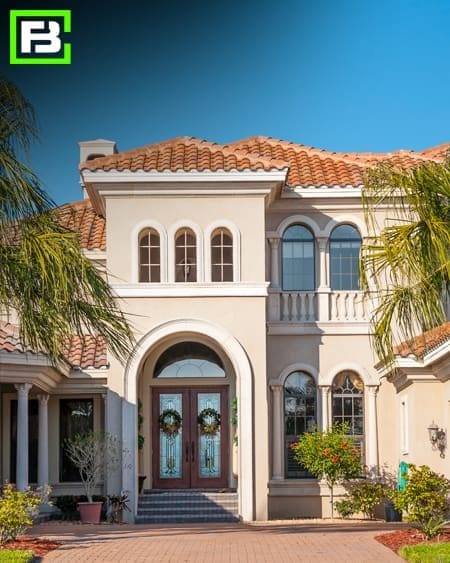
Wine enthusiasts that collect expensive, rare, and vintage wines sometimes look to resources outside their home to ensure proper storage. Restaurateurs and commercial sellers often require additional space for their wines as well. Self storage operators with the right environment can fill these special storage needs.
However, not all facilities are suitable for wine storage. It takes a specific type of market to be successful, as the common denominator among collectors is high income.
The average yearly household income of customers linked to high-end wine storage is $125,000, and the average age for these tenants is 45 years old, according to Tom Maxfield, national operations manager for Move It Self storage LLC, which operates 44 facilities in Maine, Tennessee and Texas.
Another factor to consider when it comes to building a wine-storage area is the environment. It’s critical to create and maintain the correct temperature and humidity. In general, the proper climate for storing wine is 55 degrees and 60 to 80 percent relative humidity.3 Because even the slightest variation in temperature can reduce the value of a bottle of wine, a properly designed system with consistent moisture and temperature control is vital. An improper temperature will cause the wine to age quicker, while incorrect humidity can affect a bottle’s label and cork. The storage area must have a properly insulated and designed perimeter to prevent air movement and condensation, and a system to monitor temperature and moisture.
It is critical to work with a company, such as Forge Building Company that know how to build for this delicate environment. The wine-storage area should be properly insulated with a well-designed perimeter that prevents air movement and condensation.
Wine storage also requires a backup system in case of a power failure. This can include natural gas backup generators tied into the city gas lines or double-enveloped walls, so even if the generators went down, the temperature would stay the same for about a week. Temperature and humidity controls should be monitored by facility staff and tied to an alarm system. If levels ever approach preset limits, the facility manager will be alerted. When the facility is closed, the system can be monitored by an outside service that notifies a designated person or company if there’s an issue. Other options may include installing redundant fans along with a temperature and humidity sensor that can be controlled and monitored remotely.
There are other considerations as well, such as special flooring as well as 25-watt sensory lights because wine is sensitive to heat and light.

The space designated for wine storage and the size of the lockers are additional construction components to address. Generally, for every square foot of wine storage, a developer should allow an additional four-square feet for aisles, staging and ADA [Americans With Disabilities Act] access.
Customers seeking wine storage will typically fall into two categories: commercial tenants and private collectors. You’ll want to build units in a variety of sizes to accommodate both. Small lockers should typically appeal to private collectors, while units as large as 10-by-10 feet should be considered for commercial tenants.4
Wine-storage lockers can range in size from 2-by-2 feet, which holds 12 to 15 cases, to 8-by-11 feet, which holds up to 400 cases. However, since most customers seek wine storage for case quantities, larger units are most popular. Within a footprint area of 1,000 to 1,200 square feet, generally, consider designing 300 to 360 actual square feet of wine storage.
Wine lockers can be single-, double- and triple-stacked, or use a simple side-by-side layout. They can be constructed in a range of materials from exotic woods to metal and will vary in cost.
 The Décor
The DécorThe décor of the wine storage is another consideration. Some self storage facilities offer tasting rooms as part of the customer experience and boast visual aesthetics such as mahogany doorways, vaulted ceilings and chic glassware. Special touches include wine barrels, vineyard murals and decorative furniture.
The facility exterior is super important since this will be the first thing potential customers see. Welcoming features like water displays (fountains, waterfalls, ponds) and outdoor furniture are some creative ways to complement the building. Additional features that can help frame the office include trellises with ivy or grape vines, awnings at entry points, pavers or enhanced concrete, decorative gates and doors.
Once you’ve planned the exterior design, planning for the interior elements that can enhance the marketability of your wine-storage program are also key. Some creative touches can include items such as empty wine barrels, heads staves and hoops to faux wine vats to help play up the theme.
The most important aspect of wine-storage design is the climate. There’s no point in going through any of this unless you can ensure customers’ stored property is perfectly preserved. No expense should be spared here.
Working with Forge Building Company will ensure that we will bring in the necessary experts on refrigeration and climate control for wine storage. Proper temperature and humidity are key in keeping the wine in optimum condition. We will pay attention to the placement of your wine storage area in relation to the sun, limiting exposure on that portion of the facility to save in energy costs.
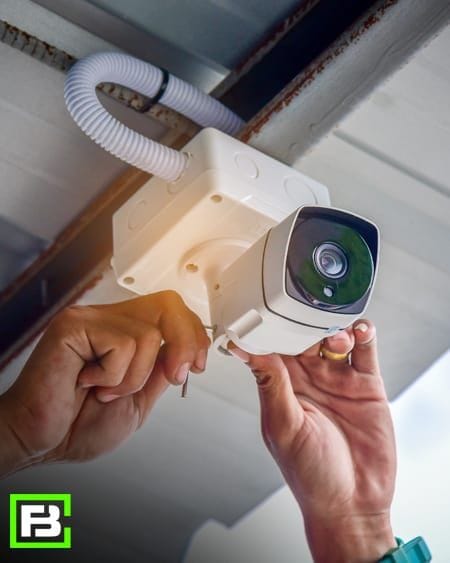 Security
SecurityAnother critical aspect of wine storage is security, not only from the facility owner’s perspective but the customer’s, too.
Wine storage can make a profitable complement to a traditional self storage operation in the right location. By building or adding wine-storage facilities that feature proper climate and humidity control, ease of access, customer perks, and proper security, the wine-storage market can give your bottom line a profitable boost.
When designing wine storage, think about how and where you like to enjoy a glass of wine. An attractive, secure environment that promotes your new offering won’t only differentiate your facility from competitors, it’ll draw in new customers. It can pay greatly to take care of these high-quality customers.
Works Cited
1 Self, K. (2016, January 22). Inside Self Storage. Retrieved from InsideSelfStorage.com: https://www.insideselfstorage.com/wine-storage/adding-wine-storage-self-storage-business-location-design-construction-and-more
2 Bruce Jordon, D. M. (2022, January 21). Inside Self Storage. Retrieved from InsideSelfStorage.com
3 Storable. (2021, August 17). Retrieved from storable.com: https://www.storable.com/resources/learn/wine-self-storage/
4 Diamond, K. (2017, September 3). Inside Self Storage. Retrieved from insideselfstorage.com: https://www.insideselfstorage.com/wine-storage/uncork-success-adding-wine-storage-your-self-storage-facility